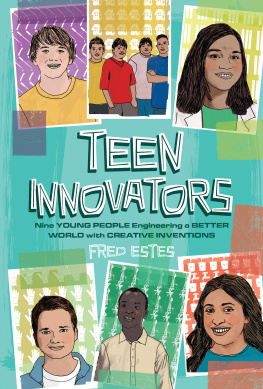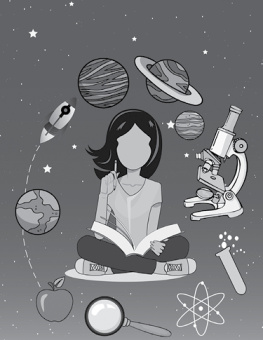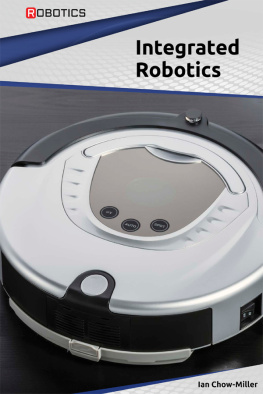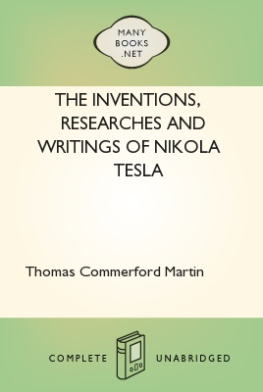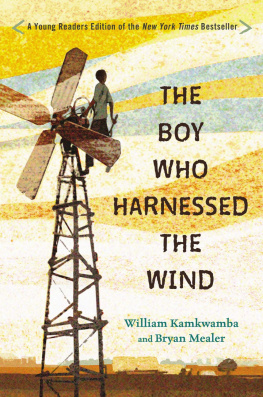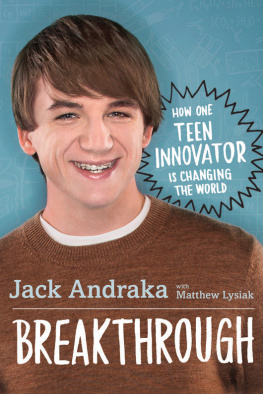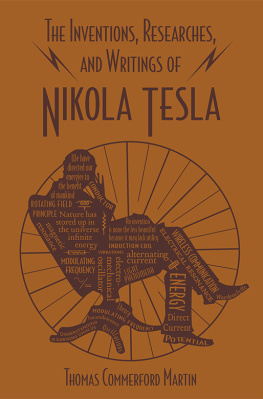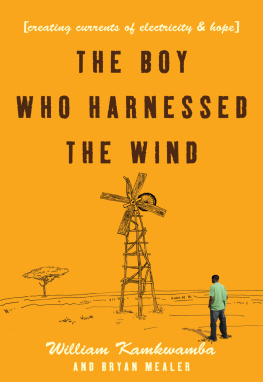

For Austin Veseliza, ingenious, hard-working, socially conscious, and compassionate

Text copyright 2022 by Fred Estes
All rights reserved. No part of this book may be reproduced, stored in a retrieval system, or transmitted in any form or by any meanselectronic, mechanical, photocopying, recording, or otherwisewithout the prior written permission of Lerner Publishing Group, Inc., except for the inclusion of brief quotations in an acknowledged review .
Zest Books
An imprint of Lerner Publishing Group, Inc.
241 First Avenue North
Minneapolis, MN 55401 USA
For reading levels and more information, look up this title at www.lernerbooks.com .
Visit us at zestbooks.net.
Cover and interior illustrations by Kavel Rafferty.
Designed by Athena Currier.
Main body text set in Tw Cen MT Std Light.
Typeface provided by Monotype Typography.
Library of Congress Cataloging-in-Publication Data
Names: Estes, Fred, 1950 author . | Rafferty, Kavel, illustrator.
Title: Teen innovator s : nine young people engineering a better world with creative inventions / Fred Estes ; [illustrated by] Kavel Rafferty.
Description: Minneapoli s : Zest Books, [2022 ] | Includes bibliographical references and index . | Audience: Ages: 101 5 | Audience: Grades: 7 9 | Summary: Teen Innovators celebrates the determination and ingenuity of ten young people who created their own original inventions. From water testing to windmills, these youth use unique methods to overcome real world problems Provided by publisher.
Identifiers: LCCN 2021049294 (print ) | LCCN 2021049295 (ebook ) | ISBN 781728417189 (library binding ) | ISBN 781728417219 (paperback ) | ISBN 781728445458 (ebook)
Subjects: LCSH: InventorsBiographyJuvenile literature . | YouthBiographyJuvenile literature.
Classification: LCC T39 .E78 2022 (print ) | LCC T39 (ebook ) | DDC 609.2dc23/eng/20211118
LC record available at https://lccn.loc.gov/2021049294
LC ebook record available at https://lccn.loc.gov/2021049295
Manufactured in the United States of America
1-48972-49232-3/25/2022
Table of Contents

Foreword
Inventors have always fascinated me, because I grew up in a household where creativity was encouraged, and the materials we needed to create lay everywhere. I remember amateur radio kits, a photo lab, garden tools, woodworking tools, a sewing machine, and old how-to-do-it books to help us with our projects. I often worry about the kids who grow up without all the time and books and weird stuff at hand to invent things. Its no wonder I became a psychologist who studies innovators as well as provides guidance to young people who want to live creative lives. Ive had the good fortune to be a professor who not only reads and writes about creative people but also gets to travel all over the world, meeting people who invent and the teachers who make classrooms into creative spaces like my own childhood home.
Thats how I met Fred Estes, the writer of this book. For many years, I worked with the teachers of Nueva School, an amazing school that was then a beautiful, big old house in the woods overlooking San Francisco bay. I remember the forts the kids were able to build in the forest under the gentle supervision of teachers; the violin music ringing through the courtyard; and the quiet bustle of classrooms with children actively writing, painting, and exploring together. Ill never forget the first glimpse of Fred in his classroom, where he and his students were examining leaves for their veins, their coloring, their role in our world. There he was, walking briskly among groups of students, adjusting a microscope for some, exclaiming at the discovery of insect eggs on the underside of a leaf for another group, or pausing to quickly give a lesson that drew everybodys attention about what makes photosynthesis stop in the fall. How could a student who was exposed to such information and hands-on learning not be inspired to create?
When I learned he was writing a book about young innovators for young adults, I was thrilled, because I knew he would show us what innovation looked like for the kids themselves and the teachers who encouraged them. Thats exactly what this book does. I meant to read it a chapter at a time, but instead ended up devouring it in one sitting. Each story reads like the best kind of mystery and adventure. How will this boy with no money use all the junk laying around his village to build a working windmill to power homes and draw water from the ground? How can this girl possibly find a way to fit all the devices she needs to purify water into one lightweight bottle, working with, of all things, concrete? How will this motley crew of undocumented kids at one of the poorest schools in Arizona figure out a way to make an underwater robot for national competitions while escaping the constant threat of deportation?
In each case, the kids do solve the mystery, while having an adventure of a lifetime. You hear all the time that anybody can be creative with enough hard work, but that is so misleading. Hard work sounds like having to do meaningless, boring stuff under the stern eye of some awful boss. This hard work, that indeed anybody can do, is actually a continuous set of engaging, independent adventures in learning how things work, and seeing ideas burst into being at each step of the way. This book will ignite your desire to seek answers to the big problems around you by gathering up some materials, a team of like-minded friends, and a lively mentor like Fred so you can make things that change the world.
Barbara Kerr, Distinguished Professor and Co-Director, Center for Creativity and Entrepreneurship at the University of Kansas

Introduction
The Music Fans and the Turtle Researcher
Daniel and Martin traveled to Costa Rica with their tenth-grade class in the spring of 2015. Like their classmates, they were eager to learn more about leatherback turtles. Their biology class back in California had studied these endangered animals and planned this special field trip. The trip took them to a conservation preserve in Costa Rica where the students would live and study alongside the biologists, getting hands-on experience with research. Daniel and Martin planned to have fun with their classmates. They did not expect to discover a way to improve the research of a biologist at the station.
During the day, the students lived like marine biologists. Small teams followed different biologists around and assisted them in the ongoing research mission of the station. They counted turtles on the beaches for the census, visited known nests to track the progress of the hatching eggs, and recorded data about the hatchlings when they emerged. The biologists taught the students to identify different sea turtle species and about the habits and life cycles of these creatures that have swum the oceans since dinosaurs roamed Earth. Biologists estimate there is only one turtle for every thousand turtles that existed back then. All the species of great sea turtles are at risk of extinction. Daniel, Martin, and their classmates learned that marine biologists hope to preserve the great sea turtles by learning more about them. Maybe more knowledge and informed conservation could save the sea turtles from extinction.
Next page
